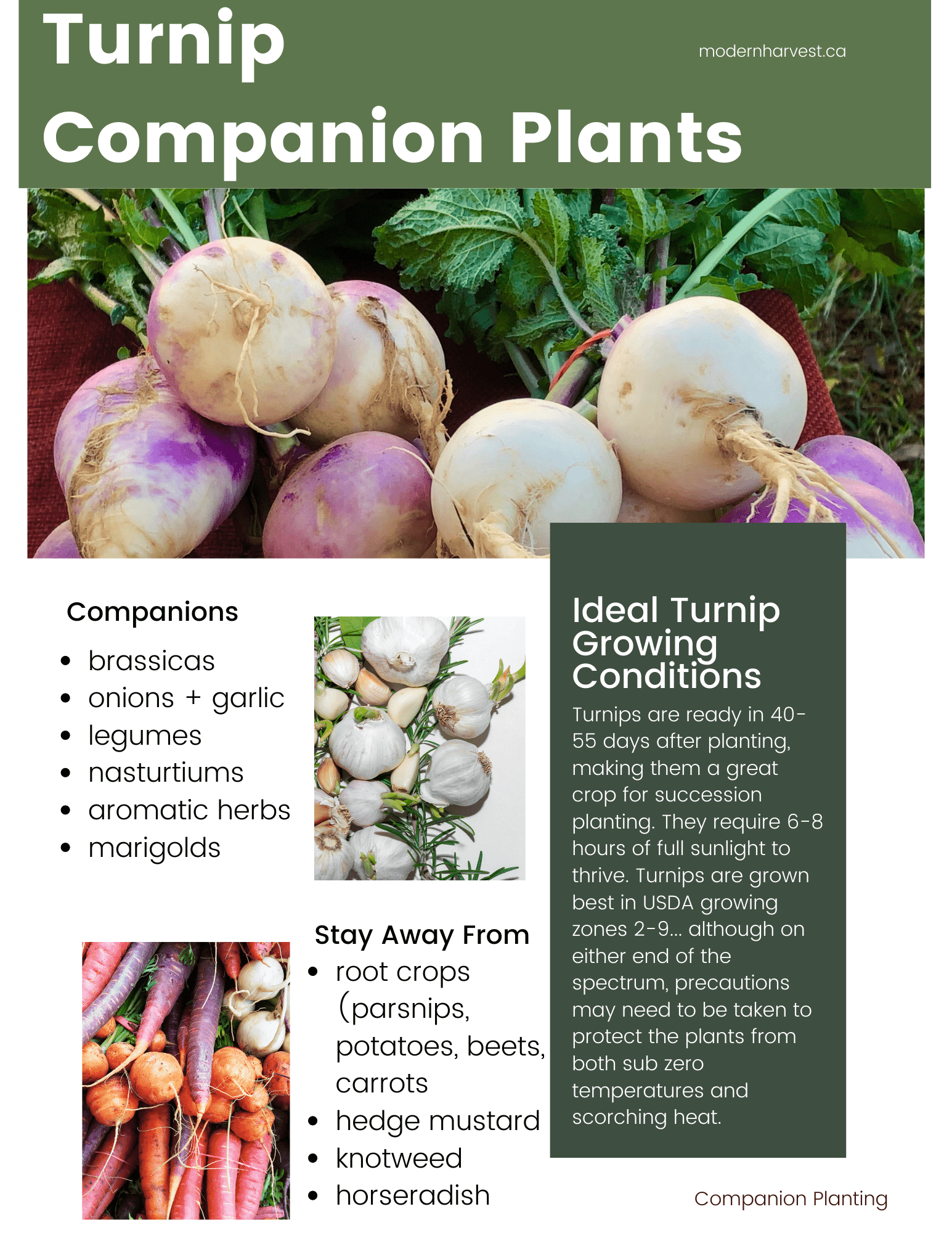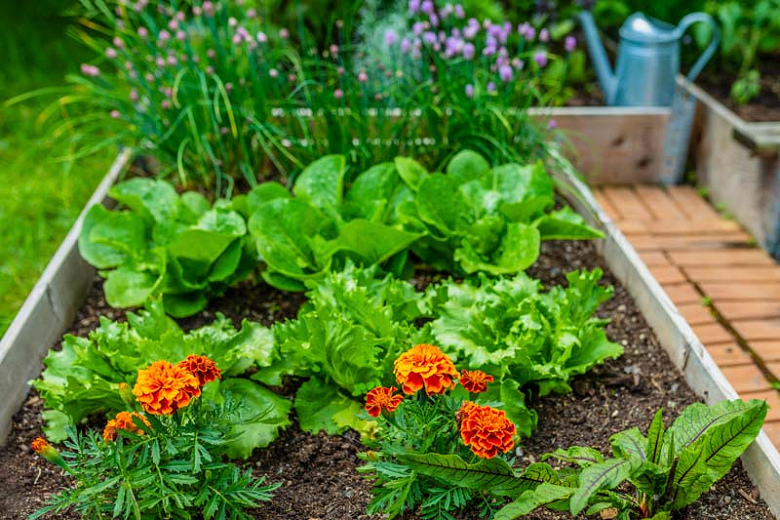Best Turnip Companion Plants That Will Boost Your Yield
Turnips are a cool-season vegetable that are relatively easy to grow. They can be grown in a variety of soils, but they prefer well-drained soil that is rich in organic matter. Turnips need full sun to grow well, but they can tolerate some partial shade.
One of the best ways to improve the yield of your turnips is to plant them with companion plants. Companion planting is the practice of planting different types of plants together in a way that benefits each other. Some companion plants can help to attract beneficial insects, repel pests, or improve the soil quality.
Here are some of the best companion plants for turnips:
- Legumes: Legumes, such as beans, peas, and lentils, are nitrogen-fixing plants. This means that they can convert atmospheric nitrogen into nitrogen that can be used by other plants. Nitrogen is an essential nutrient for plant growth, so planting legumes with turnips can help to improve the yield of your turnips.
- Aromatic herbs: Aromatic herbs, such as dill, mint, and chamomile, can help to deter pests from your turnips. These herbs have strong scents that can confuse or repel pests, such as aphids, cabbage moths, and slugs.
- Carrots: Carrots and turnips are both root vegetables, so they can be planted together without competing for space. In fact, these two vegetables can actually benefit each other. Carrots help to improve the drainage of the soil, which can help to prevent turnips from becoming waterlogged. Turnips, on the other hand, can help to deter the carrot rust fly.
- Beetroot: Beetroot and turnips are also root vegetables that can be planted together. These two vegetables have similar growing requirements, so they can be planted in the same area. Beetroot can help to improve the drainage of the soil, which can help to prevent turnips from becoming waterlogged. Turnips, on the other hand, can help to deter the beetroot leaf miner.
- Cabbage: Cabbage is a member of the Brassica family, just like turnips. These two vegetables can be planted together to attract beneficial insects, such as ladybugs and lacewings. These insects prey on pests that can damage turnips, such as aphids and cabbage moths.
- Spinach: Spinach is another cool-season vegetable that can be planted with turnips. Spinach does not require a lot of space, so it can be planted between rows of turnips. Spinach can also help to improve the soil quality, which can benefit the growth of turnips.
Turnips are a cool-season vegetable that can be grown in many different areas. They are relatively easy to care for, but there are a few things you can do to help them thrive. One of the most important things is to choose the right companion plants.
Some of the best companion plants for turnips include:
- Legumes: Legumes, such as peas and beans, are nitrogen-fixing plants. This means that they can help to improve the nitrogen content of the soil, which is beneficial for turnips.
- Aromatic herbs: Aromatic herbs, such as basil, rosemary, and thyme, can help to deter pests from turnips. They also have a strong scent that can help to attract beneficial insects, such as ladybugs and hoverflies.
- Brassicas: Brassicas, such as broccoli, cabbage, and cauliflower, can help to attract pests away from turnips. They are also good companions for turnips because they have similar growing requirements.
For more information about turnip companion plants, please visit Gardenia Inspiration. This website has a comprehensive list of companion plants for turnips, as well as information about the benefits of companion planting.
FAQ of turnip companion plants
- What are good companion plants for turnips?
Some of the best companion plants for turnips include:
- Onions and garlic: The strong odor of onions and garlic repels pests such as aphids, beetles, and spider mites.
- Legumes (peas, beans, and hairy vetch): Legumes fix nitrogen in the soil, which benefits turnips. They also help to suppress weeds.
- Marigolds and nasturtiums: These flowers attract beneficial insects that help to control pests. They also help to deter rabbits and other animals from eating turnips.
- Aromatic herbs (chives, mint, rosemary, and thyme): The strong scents of these herbs can help to repel pests. They can also be used to flavor turnips.
- Carrots: Carrots and turnips can be planted together because they have different root systems and do not compete for nutrients.
- What are bad companion plants for turnips?
Some of the bad companion plants for turnips include:
- Fennel: Fennel can inhibit the growth of turnips.
- Potatoes: Potatoes and turnips are susceptible to the same pests and diseases, so planting them together can increase the risk of infection.
- Horseradish: Horseradish can produce chemicals that can stunt the growth of turnips.
- Beets: Beets and turnips can compete for nutrients, so planting them together is not ideal.
- Black walnut trees: The roots of black walnut trees produce a toxin that can kill turnips.
- When should I plant companion plants with turnips?
You can plant companion plants with turnips at the same time. However, if you are planting legumes, you may want to wait until the turnips have established themselves before planting the legumes. This will help to prevent the legumes from competing with the turnips for water and nutrients.
- How far apart should I plant companion plants with turnips?
The spacing requirements for companion plants will vary depending on the specific plants you are planting. However, as a general rule, you should plant companion plants at least 12 inches apart. This will give them enough space to grow and thrive.
- How do I know if my companion plants are working?
There are a few ways to tell if your companion plants are working. One way is to look at the health of your plants. If your plants are healthy and free from pests, then your companion plants are likely doing their job. Another way to tell if your companion plants are working is to look at the soil. If the soil is healthy and full of nutrients, then your companion plants are likely helping to improve the quality of the soil.
Image of turnip companion plants
- Carrots: Carrots and turnips are both root vegetables that benefit from being planted together. Carrots help to repel the pests that turnips are susceptible to, and turnips help to improve the soil structure for carrots.

- Cucumbers: Cucumbers and turnips can be planted together because they have different water needs. Cucumbers need more water than turnips, so planting them together helps to ensure that the cucumbers don't get too dry.

- Lettuce: Lettuce and turnips can be planted together because they both have shallow roots. This means that they won't compete for water or nutrients. Lettuce also helps to shade the soil around turnips, which can help to prevent them from bolting.

- Peas: Peas and turnips can be planted together because they both fix nitrogen in the soil. This means that they can help to improve the soil quality for each other. Peas also help to attract beneficial insects, which can help to protect turnips from pests.

- Spinach: Spinach and turnips can be planted together because they have different growth habits. Spinach grows quickly and matures early, so it won't shade out the turnips. Turnips also help to improve the soil structure for spinach.

Post a Comment for " Best Turnip Companion Plants That Will Boost Your Yield"